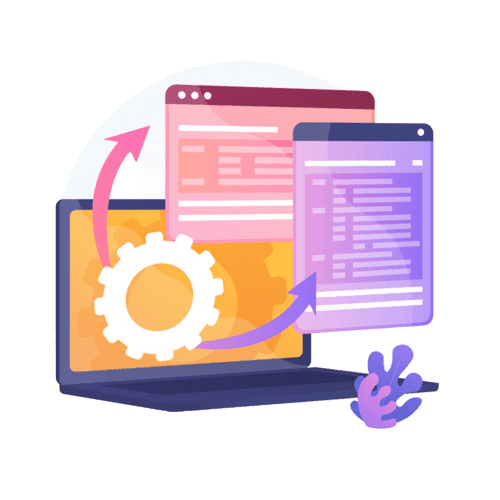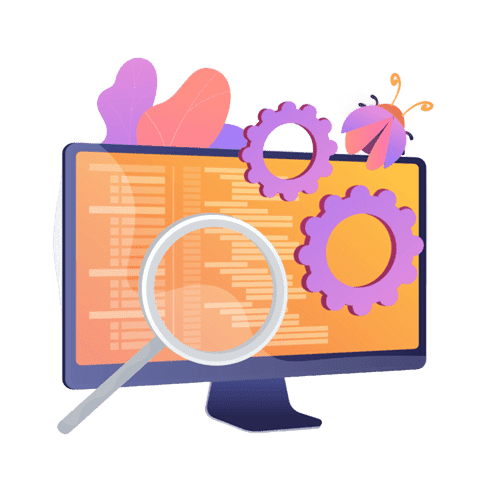Preparing for a process audit involves structured planning, clear communication, and employee engagement. Key practices include maintaining audit readiness, conducting pre-audit assessments, using process mapping tools, and ensuring proper documentation control. Engaging process owners and fostering continuous improvement enhances audit success while addressing common challenges like resource constraints and stress.
Leveraging SPICE for Software Supplier Qualification in the Automotive Industry
In the ever-evolving automotive landscape, software quality is paramount for vehicle safety and performance. By implementing SPICE-based qualification mechanisms, car manufacturers like Fiat Auto can effectively evaluate their software suppliers, ensuring robust process capabilities and fostering a culture of continuous improvement. This standardized approach not only strengthens supplier relationships but also enhances the reliability and safety of the final automotive products.

As the automotive industry increasingly relies on software to enhance vehicle functionality and user experience, the importance of high-quality software acquisition has never been more critical. To address this need, car manufacturers are employing sophisticated assessment models to evaluate and qualify their software suppliers. One such method gaining traction is the SPICE (Software Process Improvement and Capability Determination) model, particularly its specialized version known as Automotive SPICE. This approach ensures that suppliers meet rigorous quality standards, thereby enhancing the overall reliability and safety of the vehicles produced.
The Rise of Software in Automotive Systems
Initially, Information Technology (IT) made its mark in automobiles through simple function controls. However, over time, IT has evolved significantly. Today, modern vehicles are complex systems with multiple electronic control units (ECUs) working together to perform time-critical and safety-critical functions. These advancements demand robust and reliable software systems, which has led to the necessity for stringent supplier qualification processes.
Challenges in Traditional Quality Management Systems
Historically, the automotive industry relied on standards like ISO 9001 for quality management. While these standards provided a good foundation, they often fell short in the realm of software quality assurance. The complexity of software systems, especially those that are safety-critical, required more focused and detailed assessment mechanisms. Thus, automotive manufacturers turned to models like SPICE and CMM (Capability Maturity Model) to evaluate and improve their software processes systematically.

%
Increasing Adoption of SPICE Assessments
According to a survey conducted by the Automotive SPICE initiative, over 70% of European automotive manufacturers have integrated SPICE-based assessments into their supplier qualification processes as of 2023. This demonstrates the industry’s growing commitment to standardizing software quality and improving collaboration with suppliers.
%
Impact on Supplier Improvement
A study published by the ISO found that companies using SPICE-based assessments experienced a 35% increase in the implementation of best practices among their software suppliers within two years of adopting the assessment model. This improvement led to a significant reduction in software defects and enhanced overall project delivery times.
Introducing SPICE-Based Supplier Qualification
In the early 2000s, leading European car manufacturers, including Fiat Auto, initiated efforts to integrate SPICE-based assessments into their software supplier qualification mechanisms. The goal was to establish a standard approach to evaluating the capability of software suppliers, ensuring consistency and quality across the supply chain. Fiat Auto’s implementation of the SPICE-based qualification mechanism, known as the ESCAPE project, provides an illustrative example of how these assessments are conducted and the benefits they bring.
The ESCAPE Project: A Case Study
Launched in 2001, the ESCAPE project aimed to improve Fiat Auto’s software acquisition process by assessing and qualifying software suppliers based on their process capability. The project was structured in two phases:
Phase A (2001-2004): This phase involved pilot assessments using the SPICE methodology on 17 Fiat Auto software suppliers. The focus was on key processes like Requirements Elicitation, System Requirements Analysis, Software Design, and System Testing, evaluated up to capability level 4. This phase provided Fiat Auto with a comprehensive understanding of its suppliers’ capabilities, identifying areas of strength and weakness.
Phase B: Building on the success of Phase A, Phase B introduced a formal supplier qualification mechanism. Suppliers were required to meet a defined capability profile to participate in Fiat Auto’s sourcing phase. While strict, this approach was flexible, allowing suppliers with lower capability levels to qualify provisionally if they committed to an improvement program.
Benefits of SPICE-Based Assessments
The SPICE-based qualification process has brought significant benefits to Fiat Auto and its suppliers:
- Enhanced Supplier Selection: By using SPICE assessments, Fiat Auto can objectively measure the quality and reliability of its software suppliers. This ensures that only suppliers with high capability profiles are selected, leading to better quality software and fewer issues in production vehicles.
- Improved Project Monitoring: The detailed insights gained from supplier assessments allow Fiat Auto to synchronize its project monitoring activities with supplier milestones, leading to more effective oversight and control of the software development process.
- Identification of Improvement Areas: SPICE assessments highlight potential areas for improvement, not only for suppliers but also within Fiat Auto’s own processes. This collaborative approach helps both parties enhance their practices and deliver better-quality software products.
- Better Communication and Collaboration: Establishing a common language based on SPICE process definitions facilitates clearer communication between Fiat Auto and its suppliers, reducing misunderstandings and enhancing collaboration.
Conclusion
The Future of Automotive SPICE
Looking forward, Fiat Auto and other major car manufacturers aim to integrate SPICE-based assessments more deeply into their supplier qualification processes. The ongoing development of Automotive SPICE, tailored specifically to the needs of the automotive industry, promises to bring even greater alignment and consistency across the European automotive sector. By setting common standards and expected capability profiles, the industry can ensure that all players—manufacturers and suppliers alike—are working towards the same high-quality benchmarks.
Conclusion
The implementation of SPICE-based software supplier qualification mechanisms represents a significant step forward for the automotive industry. By focusing on process capability and continuous improvement, car manufacturers can ensure that their vehicles meet the highest standards of quality and reliability. As the ESCAPE project demonstrates, the benefits of this approach are far-reaching, impacting not only the quality of the end product but also fostering better relationships and more effective collaboration across the automotive supply chain. As Automotive SPICE continues to evolve, it will play a crucial role in shaping the future of software development in the automotive industry, driving innovation, safety, and customer satisfaction.
References
- Fabbrini, F., Fusani, M., Lami, G., & Sivera, E. (2007). A SPICE-Based Software Supplier Qualification Mechanism in the Automotive Industry. Software Process Improvement and Practice, 12(5), 523-528.
- Automotive SPICE
Wanna know more? Let's dive in!
Process Audits Explained: A Comprehensive Guide
Process audits are systematic evaluations of organizational processes to ensure compliance, efficiency, and effectiveness. They identify areas for improvement, mitigate risks, and ensure regulatory compliance. This guide explores types, methodologies, benefits, and challenges of process audits, providing a comprehensive understanding of their role in enhancing operational performance.
Step-by-Step Process for Passing Your First ISO Audit with Flying Colors
Preparing for your first ISO audit? This step-by-step guide breaks down everything from documentation and employee training to internal audits and corrective actions. Follow these essential steps to ensure you pass your ISO audit with flying colors and achieve certification success. Start your ISO journey today!
How Technology is Revolutionizing ISO Audits: Digital Tools for Compliance
Digital tools and audit management software are transforming ISO audits by improving accuracy, efficiency, and compliance. Automation, centralized data management, and AI-driven analytics streamline processes, reduce errors, and enhance risk management, making ISO audits more manageable and future-ready for organizations aiming to maintain certification.
What to Expect During an ISO Surveillance Audit: Staying Compliant Year-Round
ISO surveillance audits are essential for maintaining certification and ensuring compliance with international standards. This guide outlines what to expect during these audits, the importance of continuous improvement, and strategies for year-round ISO compliance, helping businesses pass audits effortlessly while enhancing operational efficiency and customer satisfaction.
Top 10 Benefits of Conducting Regular Internal Audits
Conducting regular internal audits before ISO certification offers numerous benefits, including early detection of nonconformities, streamlined audit processes, improved documentation, and cost savings. These audits foster continuous improvement, enhance risk management, boost organizational efficiency, and ensure long-term compliance, setting the foundation for successful ISO certification.
The Ultimate Guide to Preparing for an ISO Audit
Preparing for an ISO audit can be challenging, with common mistakes like poor documentation, insufficient internal audits, and lack of leadership involvement. This guide explores these pitfalls and offers expert tips, an audit readiness checklist, and strategies to ensure a smooth path to successful ISO certification.
Comprehensive Overview of Different Types of Audits
We explore various types of audits, including system, human error, clinical, cybersecurity, and business continuity audits. Each audit plays a unique role in ensuring compliance, improving efficiency, and reducing risks across different industries, helping organizations achieve their quality, safety, and operational goals.
Online Networking and Individual Development: A Deep Dive
Online networking enables global collaboration, transcending geographic limitations for personal and professional development. Through models like T-learning, I-learning, M-learning, and N-learning, individuals engage in knowledge sharing and growth. Effective e-moderation, scaffolded learning, and addressing challenges ensure productive and enriching online development experiences.
Networking and Innovation
Networking plays a crucial role in fostering innovation by enabling firms to share knowledge, access new markets, and pool resources. This article explores how diverse networks, including formal alliances and informal relationships, contribute to innovation while highlighting challenges such as network complexity and potential failures.
Developing a Comprehensive Networking Strategy
Developing a strategic networking plan is crucial for career advancement. By setting clear goals, identifying key contacts, and maintaining meaningful relationships, professionals can unlock hidden opportunities, enhance their brand, and foster valuable collaborations that support long-term growth. Networking is an ongoing process essential for sustained career success.
Networking at Events
Networking is essential for career growth. Success lies in preparation, active engagement, and thoughtful follow-up. By mastering these strategies, you can create meaningful connections at any event, opening doors to opportunities and collaborations that can significantly impact your professional trajectory.












